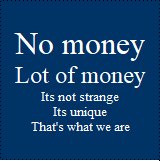National
Government
Hungary
Government
National
Law Ministry
Ministry
of Justice
National
Police
NA
National
Capital
Budapest
National Population
9.6 million to 9.8 million
Independence
Day
August 20
National
Helplines
Police – 107 / 112
Ambulance – 104 / 112
Fire – 105 / 112
Water emergency - 1817
Hotlines for missing children - 116000
Child help-line - 116111
Emotional support hotlines - 116123
Emergency - 112
NaNE Women’s Rights Association - 06 80 505 101
/ +36 4 06 30 006
National
Languages
Hungarian
English
German
Russian
Romanian
French
Other
Note: shares sum to more than 100 because some respondents
gave more than one answer on the census
Hungarian is the mother tongue of 98.9 of Hungarian speakers
National
Currency
Hungarian Forint
HUF
National
Animal
The Turul
National
Bird
The Saker falcon
National
Flower
Tulip
National
Fruit
Orange
Bordering
countries
Austria, Croatia, Romania, Serbia, Slovakia, Slovenia,
Ukraine
Country
area (aprox)
Country
code
Country domain
Botanical
Gardens
Forests
Zoos
|

